
Water Lilies as a Cut Flower
Water lilies are not a common cut flower, but they are found now and again at wholesale houses or …



Richmond County Center will be closed tomorrow, 07/04/2025 for the holiday.
El inglés es el idioma de control de esta página. En la medida en que haya algún conflicto entre la traducción al inglés y la traducción, el inglés prevalece.
Al hacer clic en el enlace de traducción se activa un servicio de traducción gratuito para convertir la página al español. Al igual que con cualquier traducción por Internet, la conversión no es sensible al contexto y puede que no traduzca el texto en su significado original. NC State Extension no garantiza la exactitud del texto traducido. Por favor, tenga en cuenta que algunas aplicaciones y/o servicios pueden no funcionar como se espera cuando se traducen.
Inglês é o idioma de controle desta página. Na medida que haja algum conflito entre o texto original em Inglês e a tradução, o Inglês prevalece.
Ao clicar no link de tradução, um serviço gratuito de tradução será ativado para converter a página para o Português. Como em qualquer tradução pela internet, a conversão não é sensivel ao contexto e pode não ocorrer a tradução para o significado orginal. O serviço de Extensão da Carolina do Norte (NC State Extension) não garante a exatidão do texto traduzido. Por favor, observe que algumas funções ou serviços podem não funcionar como esperado após a tradução.
English is the controlling language of this page. To the extent there is any conflict between the English text and the translation, English controls.
Clicking on the translation link activates a free translation service to convert the page to Spanish. As with any Internet translation, the conversion is not context-sensitive and may not translate the text to its original meaning. NC State Extension does not guarantee the accuracy of the translated text. Please note that some applications and/or services may not function as expected when translated.
Collapse ▲
Water lilies are not a common cut flower, but they are found now and again at wholesale houses or …

N.C. Department of Agriculture and Consumer Services, OGS, Southwestern RC&D, and the Carolina Land & Lakes RC&D have teamed …
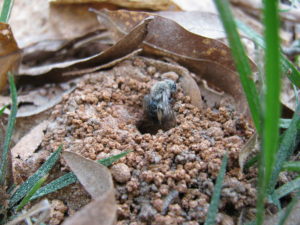
This time of year many people notice small dirt mounds in their yards or in parks or ball fields …

Cottony cushion scale is an exotic pest that has been in the US for over a century. Initially a …

False oleander scale, Pseudaulacaspis cockerelli, is a tropical and subtropical pest originally from China. It is common throughout many …
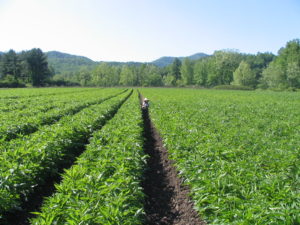
2/1/2019 – (Reviewed 8/28/2024) Gaia Herb Farm is a well known company in western North Carolina. They have a …

Postharvest storage and shipping environments are often conducive to plant stress and disease development. Plants are often in dark …

Download our editable farm lease agreement by clicking this “Farm Lease Agreement Template” . If you need any help …
A wet fall 2018 not only delayed, and in some cases completely prevented, timely fall-plantings of cool-season annual and …

Botrytis is one of the most common plant pests affecting greenhouses, nurseries, landscapes and food operations. The fungal pathogen causes …
CONTACT Andrea Ashby, director NCDA&CS Public Affairs 919-707-3004 or email at andrea.ashby@ncagr.gov RALEIGH – The N.C. Department of Agriculture and Consumer Services has …
Many of you may have received this information. Thanks to Danny Lauderdale for the following post on his website. I …
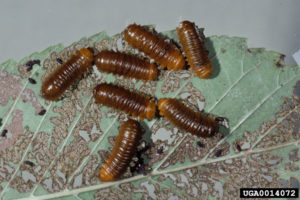
Elms have lots of pests. This week I have had several reports of larger elm leaf beetles, Monocesta coryli, …
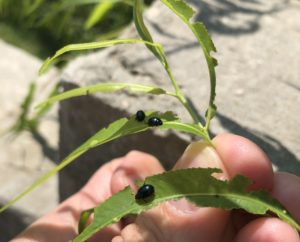
You can find a lot of damage on willows this time of year because imported willow leaf beetles have …
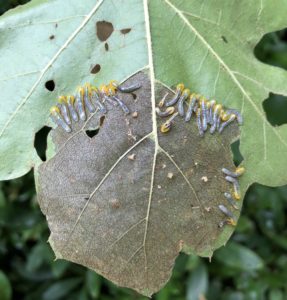
Oaks have hundreds of herbivores so it is no wonder that towards the end of summer some of the …

If you like to garden you probably like butterflies. You probably also grow some herbs like fennel, dill, or …
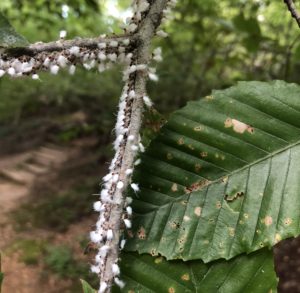
You might notice twigs on beech trees covered in a woolly sleeve. Get closer and it will begin to …

Oak lace bugs (Corythucha arcuata), like other lace bugs, cause stippling on leaves. Oak lace bugs, of course, feed …

This factsheet summarizes the characteristics of bees and addresses how to control them as an …

This factsheet describes the symptoms of a shoot inhibitor herbicide injury.

This factsheet describes the symptoms of a metribuzin herbicide injury.

This factsheet describes the symptoms of a dichlobenil herbicide injury.

This factsheet describes the symptoms of a protoporphyrinogen oxidase inhibitor herbicide injury.
This pesticide factsheet covers the use and characteristics of Scythe (pelargonic acid) or Axxe (ammonium …
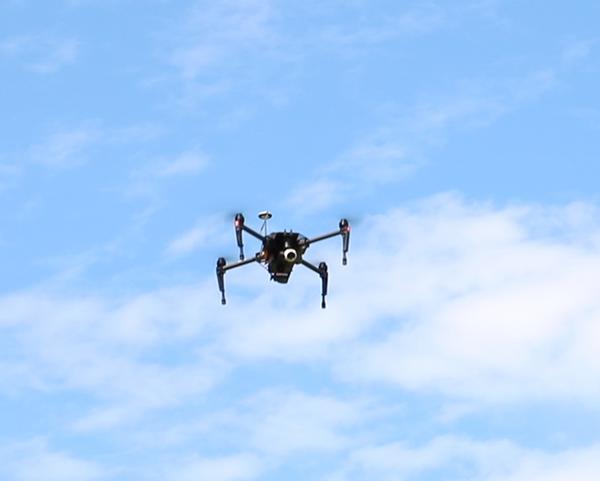
This publication discusses flying unmanned aerial vehicles (drones, model aircraft) for commercial purposes. You'll learn …
Intensive Vegetable Production refers to a system of marketing and producing vegetable crops in which …